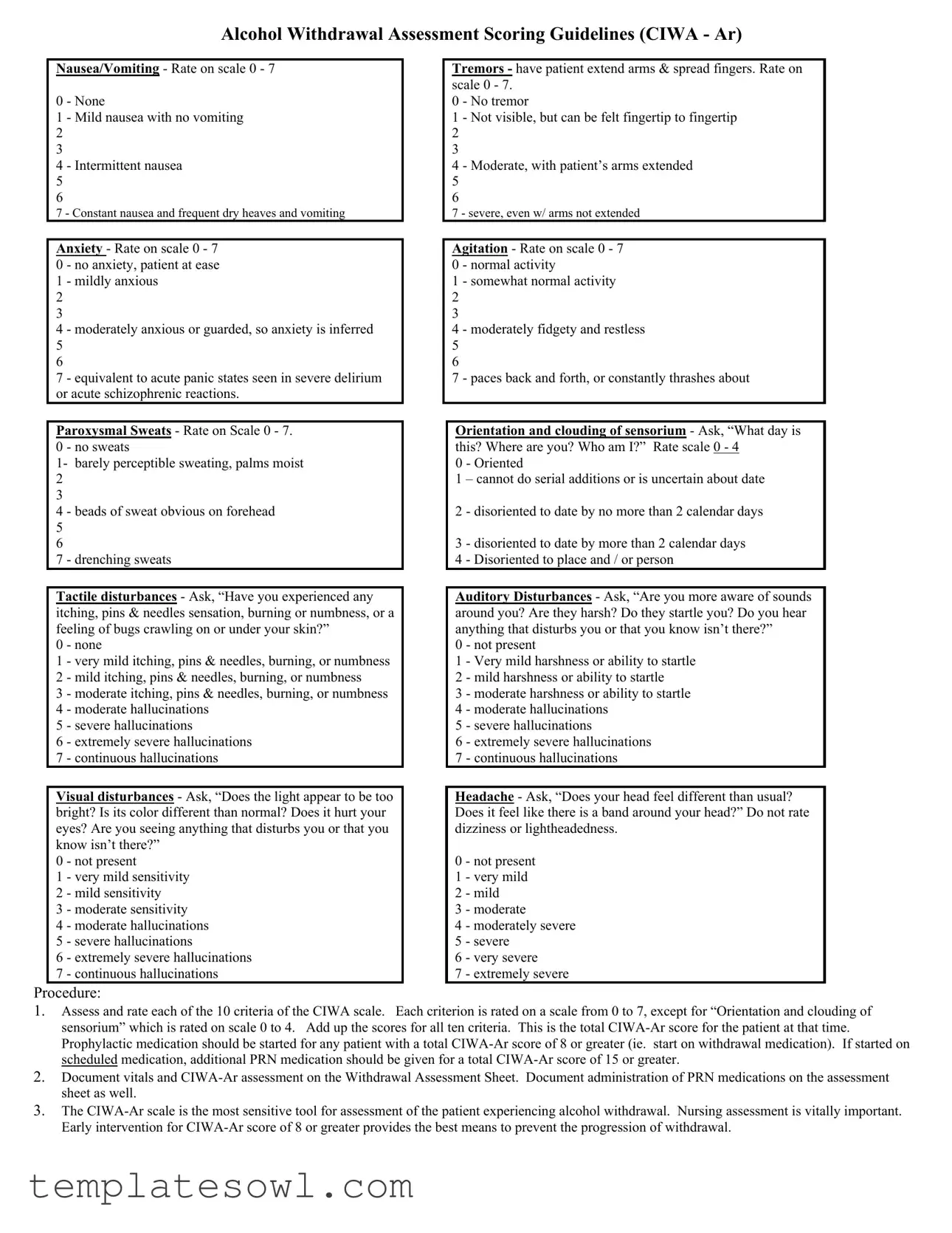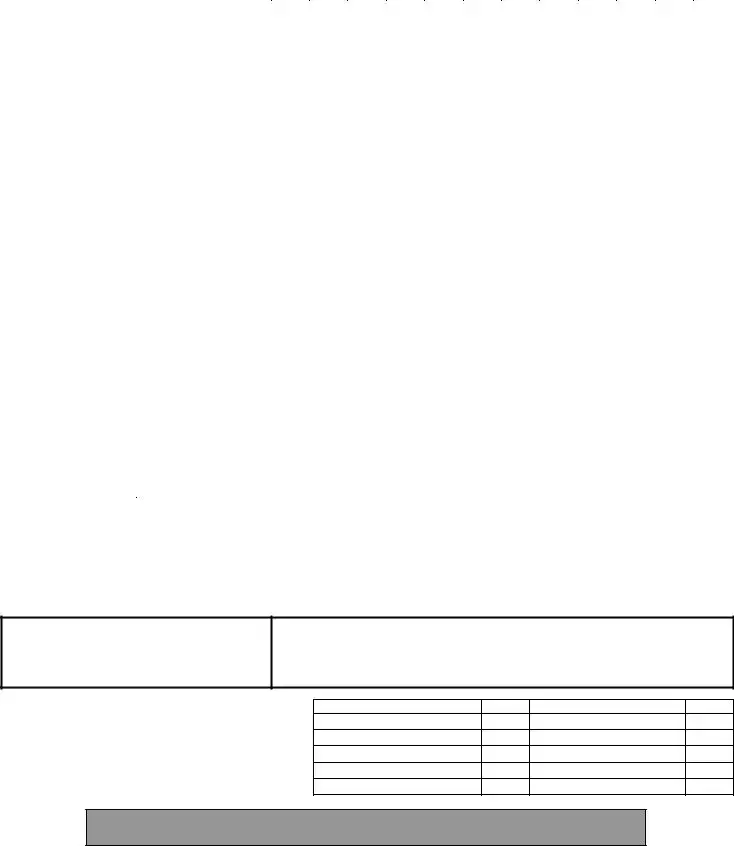What is the CIWA-Ar form used for?
The CIWA-Ar form is a tool used by healthcare providers to assess the severity of alcohol withdrawal symptoms in patients. It helps in monitoring symptoms such as nausea, anxiety, tremors, and disturbances in perception. By evaluating these symptoms, providers can make informed decisions about the necessary interventions, ensuring the patient receives appropriate care to minimize withdrawal complications.
How does scoring on the CIWA-Ar scale work?
Each symptom is assessed on a scale that usually ranges from 0 to 7, with 0 indicating no symptoms and higher scores indicating increasing severity. For the "Orientation and clouding of sensorium" criteria, there is a different scale from 0 to 4. After scoring each of the ten criteria, the scores are totaled to determine the overall CIWA-Ar score. This score helps guide treatment decisions for the patient.
When should prophylactic medication be initiated based on the CIWA-Ar score?
If the total CIWA-Ar score reaches 8 or greater, prophylactic medication should be started. This early intervention is crucial in managing potential withdrawal complications effectively. For those on scheduled medication, additional PRN medication is advised if the score hits 15 or higher.
What symptoms are evaluated in the CIWA-Ar assessment?
The CIWA-Ar assessment evaluates the following symptoms: nausea/vomiting, anxiety, paroxysmal sweats, tactile disturbances, visual disturbances, tremors, agitation, orientation and clouding of sensorium, auditory disturbances, and headache. Each of these symptoms is crucial for determining the severity of alcohol withdrawal the patient is experiencing.
What should be documented after completing the CIWA-Ar assessment?
It's essential to document the patient's vital signs, the CIWA-Ar assessment scores, and any medications administered. This information should be recorded on the Withdrawal Assessment Sheet to maintain an accurate and comprehensive medical record, facilitating effective ongoing care and monitoring.
How often should the CIWA-Ar assessment be repeated?
If the initial CIWA-Ar score is 8 or higher, assessments should be repeated every hour for a total of eight hours. If the patient's condition stabilizes, the frequency can decrease to every two hours for another eight hours, and then every four hours. For initial scores under 8, assessment should occur every four hours for up to 72 hours. This regular monitoring is key to adjusting treatment as necessary.
What actions should be taken if a patient’s CIWA-Ar score exceeds critical thresholds?
If the total CIWA-Ar score exceeds 35, or if a patient requires extensive medication or experiences respiratory distress, transfer to an intensive care unit may be necessary. Continuous assessment is essential in these cases to ensure the patient's safety and effective management of severe withdrawal symptoms.


